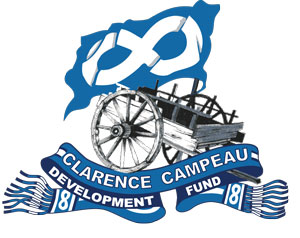
After receiving financing for your Métis owned business from the Clarence Campeau Development Fund, you must provide yearly financial statements. This is a standard requirement among all lenders and carries significant significance. These statements offer crucial insights for both business owners and lenders. They not only help evaluate your business’s financial health but also aid in identifying opportunities for more funding, all the while ensuring your financials match your business plan projections.
The triad of your financial statements encompasses an Income Statement, a Balance Sheet, and a Cash Flow Statement.
The Balance Sheet
The Balance Sheet presents a snapshot of your company’s financial position at a specific point in time. It offers insights into your business’s assets, liabilities, and equity, enabling a full understanding of its financial health.
The Balance Sheet is comprised of key elements, each contributing specific insights about your business:
- Assets: Assets represent what your company owns and encompasses categories such as current assets (e.g., cash, accounts receivable) and non-current assets (e.g., property, equipment). These assets are essential for your business to make money and are critical for its daily operations.
- Liabilities: Liabilities are the financial obligations your company owes to external parties. These include current liabilities (e.g., accounts payable, short-term loans) and non-current liabilities (e.g., long-term loans, bonds). Liabilities represent funds that must be repaid and serve as indicators of your business’s debt.
- Equity: Equity signifies the residual interest in your company’s assets after deducting liabilities. It’s the ownership stake held by the business owners or shareholders. An increase in equity indicates growth in the company’s net worth.
- Working Capital: Working capital illustrates your business’s short-term liquidity. Positive working capital indicates the ability to cover short-term obligations.
Working Capital = Current Assets – Current Liabilities
- Debt-to-Equity Ratio: This ratio compares your company’s total debt to its equity. It provides insights into the balance between debt financing and owner’s equity, indicating financial risk.
Debt-to-Equity Ratio = Total Debt / Total Equity
- Current Ratio: The current ratio is the ratio of current assets to current liabilities. It indicates your business’s short-term liquidity and ability to meet immediate obligations.
Current Ratio = Current Assets / Current Liabilities
It is vital that you receive and review your annual financial statements in a timely manner. This will help you to make important and relevant business decisions.
Aftercare Programs
Understanding your financial statements is critical to knowing what is happening in your business. As a reminder, the Clarence Campeau Development Fund clients have access to programs that can help you understand your financial statements better and improve your financial literacy.
If you are interested in learning more about the financial health of your business through Financial Statements, reach out to your Business Development Specialist to learn more about the Management Skills Program! The Management Skills Program offers a non-repayable grant that can pay for up to 75% to a maximum of $10,000 per entrepreneur.
We also offer the Business Support Program that allows a consultant to work with you to identify financial issues and give recommendations to help your business improve its financial position moving forward. The Business Support Program can consider up to 100% of the cost to a maximum of $10,000.
Interested? Give your Business Development Business Specialist a call at 306-657-4870!
Contact us!
We would love to hear your ideas for your business. Fill out your information and an advisor will contact you!
